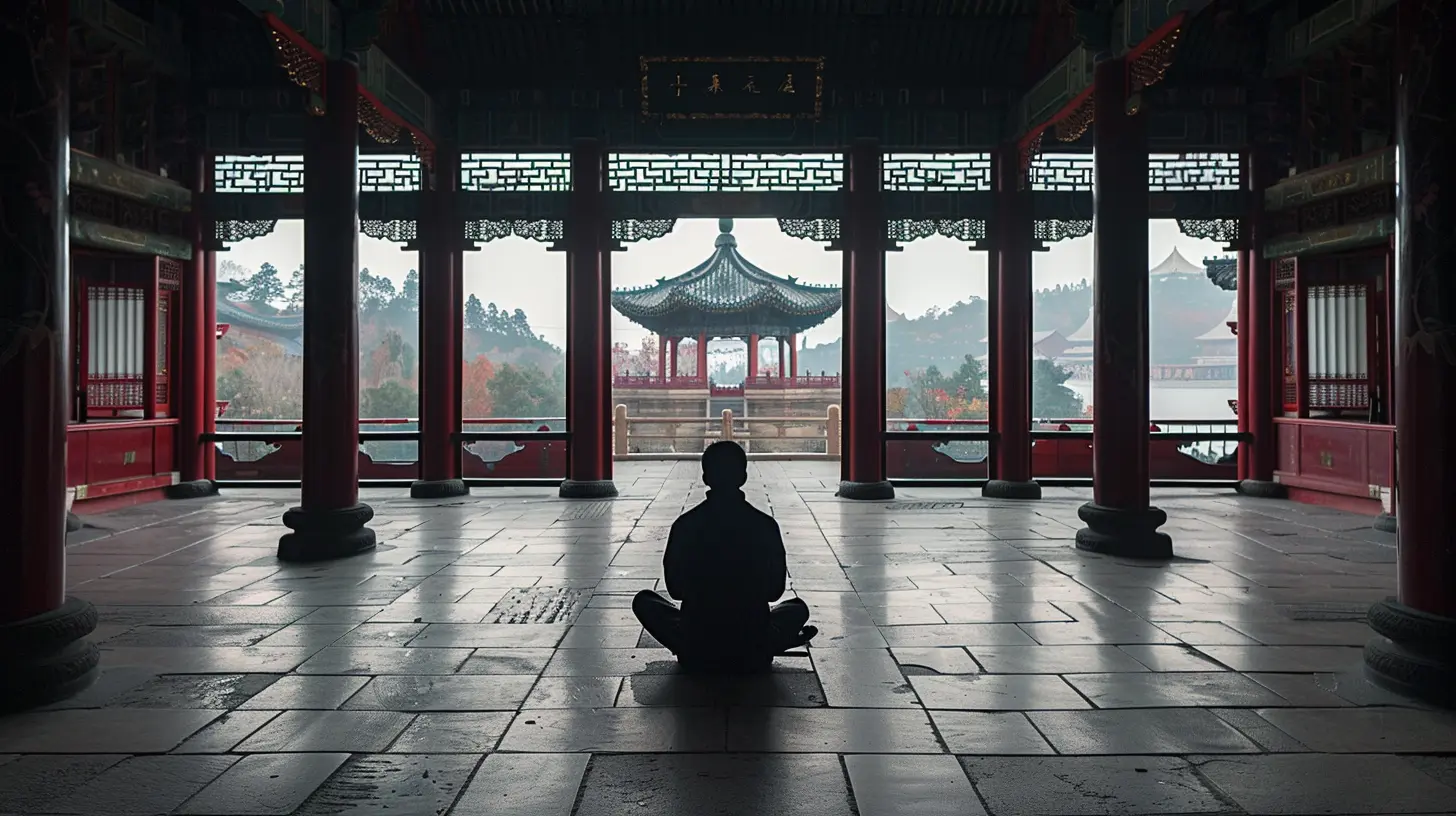Ancient Wisdom: Discovering World Heritage Temples and Shrines
9 July 2025
Let me ask you something—have you ever stood in front of a centuries-old temple, taken in its massive stone walls, and just felt something shift deep inside you? Like, this place knows things. Secrets. Stories. Timeless wisdom written not in books but in bricks and carvings. That's what ancient temples and shrines do to you—they whisper the secrets of civilizations long gone but never really forgotten.
If you’re a traveler with a thirst for culture or someone just looking to escape the everyday hustle, visiting world heritage temples and shrines is like sipping from the fountain of human history. So grab your mental passport, because we're about to embark on a spiritual and historical adventure that'll stir both your mind and soul.

What Makes a Temple or Shrine "World Heritage"?
Before we dive into the juicy destinations, let's clear this up: what qualifies a temple or a shrine as a World Heritage Site?UNESCO (yep, that global cultural watchdog) designates certain landmarks around the globe as World Heritage Sites because they’re seriously valuable—culturally, historically, or scientifically. Temples and shrines get this badge of honor when they offer insight into human civilization and are considered irreplaceable treasures.
In short, these places are the real deal. They're protected so that you, me, and future generations can keep learning from them.

Why Visit Ancient Temples and Shrines?
You might be thinking, "Alright, that sounds cool, but why should I care?" Well, here’s the thing—these sacred spots are more than just photo ops.- They connect us to our roots – Want to understand where humanity came from? Visit a temple.
- They’re windows into ancient engineering – Some of these places were built before modern tools existed. Mind-blowing craftsmanship.
- They offer spiritual clarity – Whether you follow a religion or not, the serenity and symbolism can be deeply moving.
- They’re often in jaw-dropping locations – Temples on mountaintops? Shrines in misty forests? Yes, please.
Okay, ready to dive into some amazing places? Let’s go!
1. Angkor Wat – Cambodia 🇰🇭
The crown jewel of Cambodia, Angkor Wat isn’t just the largest religious monument in the world—it’s a straight-up architectural marvel!Originally built as a Hindu temple dedicated to Vishnu, it later became a Buddhist site. With its layers of intricate carvings and symmetrical layout, this place is like an ancient blueprint for spiritual harmony.
Walking through its corridors feels like stepping into another world—one where gods, demons, and kings walked alongside humans.
Travel Tip:
Catch the sunrise over Angkor Wat. It's cliché, yes, but also magical. Trust me, that reflection over the moat? Unforgettable.
2. The Parthenon – Greece 🇬🇷
Let’s swing over to Athens. On top of the Acropolis, the Parthenon stands proud like a resilient grandma who’s seen it all.Dedicated to Athena (the goddess of wisdom—fitting, right?), this ancient temple is an icon of classical architecture. Those gigantic white columns? Absolutely timeless.
Even in ruins, it radiates power. You’ll stand there and just marvel at how the ancient Greeks managed to build something so precise, balanced, and—let’s be honest—Instagrammable.
Insider Tip:
Visit the Acropolis Museum before you climb the hill. It’ll give you way more context and appreciation when you’re staring up at those Doric columns.3. Borobudur – Indonesia 🇮🇩
Imagine a giant stone mandala rising out of a jungle mist—that’s Borobudur for you. Located in central Java, this Buddhist temple is the largest of its kind on Earth.It’s built like a pyramid, but with circular layers that represent the path to enlightenment. As you walk up (yes, you climb this thing), each level brings you closer to spiritual clarity. And let’s not even get started on the 500+ Buddha statues.
Strolling around Borobudur at sunrise? It’s like stepping inside a dream.
4. Kiyomizu-dera – Japan 🇯🇵
Now, if elegance and balance had a baby, it’d be Kiyomizu-dera.This wooden temple in Kyoto is a favorite not just for its beauty, but also for how it literally hangs off a hill overlooking cherry blossom trees and Kyoto’s skyline. No nails were used in its original construction (how?!).
Every corner of the temple connects with nature—flowing water, towering trees, fresh air. It's like Japan’s way of reminding you to breathe and be present.
5. Karnak Temple – Egypt 🇪🇬
Step aside, Indiana Jones—this one’s for the history buffs.Karnak Temple in Luxor is less of a “temple” and more like an entire complex of temples, halls, and obelisks. It was built, expanded, and worshipped in for over 2,000 years!
You’ll find yourself walking under towering stone columns (seriously, you’ll feel like an ant), reading hieroglyphs, and maybe even catching a Sound and Light Show that brings pharaoh stories to life.
It’s not quiet and meditative like some other temples. Karnak is loud, proud, and dripping with ancient glory.
6. Temple of Heaven – China 🇨🇳
Beijing’s Temple of Heaven is where the Ming and Qing emperors used to pray for you guessed it—good harvests.Built with insane precision, the layout and design are all about harmony between heaven and Earth. You know how some places just “feel right”? This is one of them.
The blue-tiled Hall of Prayer looks like a UFO landed in ancient China—in the best way. It’s round, it’s bold, and it’s symbolic.
Fun Fact:
Locals still gather here at dawn for tai chi, dance, and music. It’s a temple with soul that’s still very much alive.7. Chichen Itza – Mexico 🇲🇽
Next stop: the land of the Maya!Chichen Itza’s famous pyramid, El Castillo, dominates the landscape. But this site is so much more than just one (very symmetrical) step-pyramid. It’s a city built on astronomy, math, and religious belief.
During the equinox, sunlight casts a shadow that looks like a serpent slithering down the pyramid. Coincidence? Nope. The Maya were masters of cosmic timing.
You’ll leave here questioning how much we’ve really advanced since then.
8. Brihadeeswarar Temple – India 🇮🇳
Hold onto your saris, because this temple is jaw-dropping.Located in Tamil Nadu, Brihadeeswarar Temple is over 1,000 years old and made entirely of granite. It has no foundations (how is it still standing?!), and the vimana (tower) reaches over 200 feet.
It’s a celebration of Shiva, art, and South Indian architecture. The murals inside are detailed, expressive, and full of color. It’s living history that hits you in the senses.
9. Mont-Saint-Michel – France 🇫🇷
Is it a temple? A monastery? A fortress? Honestly, it’s all three.Mont-Saint-Michel rises like a mystical mirage from the sea. During low tide, you can walk to it. At high tide? It's an island. The abbey at the top is straight out of a fantasy novel.
This Christian shrine has welcomed pilgrims for centuries, and when you climb its curving stone steps, you’ll understand why. It’s a spiritual journey in more ways than one.
10. Uluru and Kata Tjuta – Australia 🇦🇺
Okay, technically these are natural formations, but for the indigenous Anangu people, they are sacred temples of the Earth.Uluru (also known as Ayers Rock) is more than just a big red rock. It’s a living cultural landscape with cave paintings, spiritual stories, and ancestral paths.
Visiting Uluru isn’t about sightseeing—it’s about listening. To the wind, the stories, and the wisdom in the land.
Final Thoughts: Ancient Sites, Modern Lessons
So what do all these ancient temples and shrines teach us?They whisper stories of resilience, devotion, knowledge, and community. They remind us that no matter how far technology takes us, we’re still spiritual beings craving meaning, beauty, and connection.
And visiting them? It’s not just travel—it’s a time machine, a spiritual retreat, and an adventure all rolled into one.
So go. Walk where the ancients walked. Listen to the silence. Let the wisdom in the stone speak to your soul.
Because sometimes, the best way to move forward is to look back.
all images in this post were generated using AI tools
Category:
World Heritage SitesAuthor:

Reed McFadden
Discussion
rate this article
2 comments
Rook McCool
This article beautifully captures the profound significance of world heritage temples and shrines. The blend of history, culture, and spirituality is truly captivating. Thank you for shedding light on these remarkable sites that remind us of our shared heritage and the importance of preservation.
November 13, 2025 at 4:05 PM

Reed McFadden
Thank you for your thoughtful comment! I’m glad you found the article meaningful and appreciate the importance of preserving our shared heritage.
Zeno Blair
Exploring ancient temples and shrines unveils the timeless wisdom of our ancestors. Each visit is a journey through history, inspiring us to connect deeply with our shared heritage.
July 17, 2025 at 4:43 AM

Reed McFadden
Thank you for your insightful comment! I completely agree that visiting these sacred sites allows us to honor and learn from the profound wisdom of our ancestors.


